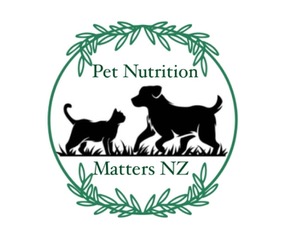Mixed Feeding, Can You Feed Both Raw And Processed Food To Your Pets?
As I stated in an earlier post the stomach of canines and felines, when correctly fed, is like an acid bath. Raw meat protein stimulates strong stomach acidity (by triggering the production of hydrochloric acid in acid-secreting cells within the stomach). This keeps the pH of the stomach between 1.5 – 2.1, which is very acidic (about the same pH of vinegar). Low pH means high acidity. This is very important because digestive enzymes work best in an acidic environment. This acidity in the stomach will sterilise ingested pathogenic bacteria such as E coli or Salmonella. A raw fed pet will have highly acidic gastric secretions that are able to kill any pathogenic bacteria and a rapid gut transit time that prevents bacterial colonisation.
When a dog or cat swallows a commercial pet food (high carbohydrate, high plant protein, low meat protein diet), acid-secreting cells in the stomach are not stimulated to produce as much hydrochloric acid, thus the pH does not drop as low. The gastric fluids of commercially fed pets fluctuates between 5 to 7. If the pH in their digestive tract is changed by feeding a food that’s not appropriate for them, some of that protection is lost. Once the pre-digested food leaves the stomach, it needs to be at the proper pH to trigger the release of the pancreatic enzymes that do most of the digesting.
If there’s starch in the meal, the higher pH means fewer of those enzymes will be released and undigested food particles can trigger inflammation and an immune response called leaky gut syndrome. Leaky gut can allow undigested food and bacteria to pass through the wall of the small intestine, where they enter the body and cause immune disorders. If a pet suffers from yeasty ears or yeast infections, this Candida thrives on the more alkaline pH that comes with starch.
Protein from raw food and carbohydrate from a processed diet require different pH levels in the gut in order to be processed. So your animal is unable to digest them both together.
Finally, and most importantly, if the stomach isn’t acidic, bones the animal eats won’t be properly digested. This can cause two problems. The animal won’t be able to absorb all of the minerals they needs from bones, and the pet is at greater risk of bowel obstruction because their digestive tract can’t make the bones soft and rubbery, like a bone in a bowl of vinegar. This is why mixing raw and kibble together puts all pets at increased risk for several health issues. It is not a practice I would recommend.
The only exception why you’d want to feed a blend of raw and kibble is when transitioning from a commercially processed diet to raw. This is to minimize digestive upset for the pet, for a very short duration, usually for a week or so. Some pets have sensitive stomachs. Doing a transition helps the digestive system adapt to a new food without having to deal with diarrhoea or other types of maldigestion. Transitioning is a common practice. Never feed raw meaty bones through this transition. The bone can be ground into the meat in order to obtain the nutritional benefits during transition.
Another method, only for canines, is fasting for certain period, then feeding raw food. Never fast a cat as this brings about Hepatic lipidosis, also known as fatty liver syndrome.
Contact me if you’d like to know more. Always happy to help.

